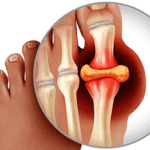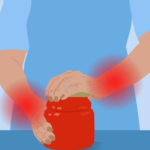Pain is your body’s way of telling you something is wrong. But it doesn’t always tell you exactly what’s wrong and if you need medical treatment. So, when pain develops in your hand, wrist or elbow, how do you know whether to treat it at home or see a doctor?
Did pain come after a fall or out of the blue?
In some cases, the reason for your pain is obvious — maybe you’ve worked in the garden for several hours or had a bad fall. In others, pain seems to come out of the blue.
Your activity level and the wear and tear on your body can also factor in, especially with joint pain or various forms of tendinitis. If you’re highly active, you can typically expect some pain in your joints as you get older.
Common causes of pain in your hand, wrist or elbow
Certain activities or conditions can make you more prone to experiencing elbow and wrist pain. The list includes:
Golfer’s elbow
While you can get golfer’s elbow from plenty of things other than golf — tennis, hammering and working out — the pain is still the same. The repeated bending, grasping and twisting of your arm and wrist can cause inflammation in the tendons that connect your elbow to your forearm. That can lead to pain that radiates to your little and ring fingers, most commonly by irritation of the ulnar nerve on the inner side of your elbow.
Carpal tunnel syndrome
Carpal tunnel syndrome is a condition directly affecting the hand and wrist. It occurs when repeated finger and hand use — like working an assembly line or repetitive hammering — causes swelling about your wrist. That puts pressure on the median nerve and tendons that run through the “tunnel” between your hand and forearm, leading to pain, weakness, tingling and even numbness in your hand and wrist.
Arthritis in your hand and wrist
Arthritis is another possibility, as it’s common for types of arthritis to affect the fingers and hand. Two types of arthritis, in particular, are common culprits of this kind of joint pain: osteoarthritis and rheumatoid arthritis. Osteoarthritis is more common and caused by wear and tear on your joints, breaking down cartilage in your joints over time. Rheumatoid arthritis is a chronic autoimmune condition in which an overactive immune system causes inflammation and, ultimately, cartilage degeneration in your joints.
Muscle strains and ligament sprains
Muscle strains and ligament sprains are yet another cause of pain, and they can frequently happen in your thumb, finger and wrist, leading to pain throughout your whole hand. Sprains are usually the result of an injury, stretching or tearing ligaments within a joint. Chances are, you’ll be able to recognize it after a fall or accident, but you’ll want to check with a healthcare provider to make sure there aren’t any fractures.
Other causes
Some other causes of elbow, wrist or hand pain include:
- Kienböck’s disease.
- Biceps tendonitis.
- De Quervain’s tenosynovitis.
- Trigger finger.
- Mallet finger.
- Ulnar wrist pain.
- Ganglion cysts.
- Tennis elbow.
Even if you can’t quite figure out if your pain is from one of these conditions, there are still things you can do to narrow it down and get proper treatment.
How to assess your pain
Health professionals determine which people need urgent medical care using a process known as triage. You can apply the same technique at home.
Dr. Seitz says if something is seriously wrong, you’ll know it. A wrist fracture, for instance, will cause pain you can’t ignore. “When the pain is so bad you can’t move past it, call your doctor or head to the emergency department,” he advises.
DIY care for hand, wrist or elbow pain
If your symptoms aren’t serious, start by reducing the suggests the following steps:
- Apply ice to the painful area (if new-onset) or heat (if present for more than a day).
- Take over-the-counter pain medication like ibuprofen or acetaminophen.
- Use a stretchy elastic bandage or another compression device to wrap the painful or swollen area.
If you can tie your pain to overexertion, or if you think it stems from repetitive motion (such as tennis elbow), take a break from that activity. Give your body a rest.
What if the pain lingers?
Even tolerable pain may signal a more serious problem when it persists. If home treatment doesn’t seem to address the issue after two or three days, contact a doctor.
Provide as much information as possible about your activities and other pertinent factors, including which medications or supplements you’re taking.
Ultimately, taking a few minutes to assess your pain may help you avoid an emergency room visit for situations that aren’t serious.





